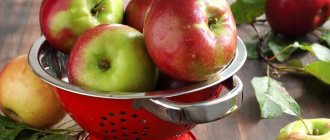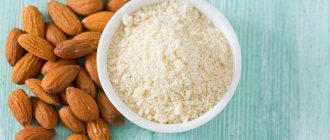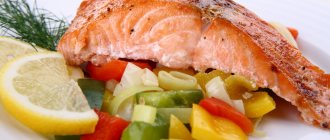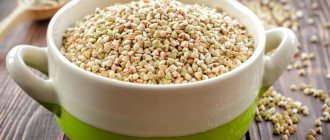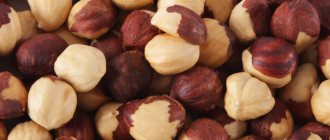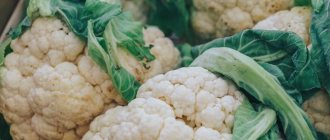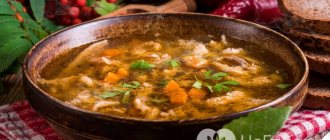How is brown rice different from regular rice?
White and brown rice grains belong to the same grain. The only difference between them is the processing.
- White cereals are grains that are thoroughly cleaned and polished before being packaged and sent for sale. The process removes the husk and germ. This treatment can significantly extend the shelf life of the product and protect against contamination by harmful microorganisms. At the same time, the beneficial properties are significantly reduced - the cereal loses up to 90% of the valuable substances in its composition.
- Brown groats are grains that have undergone minimal processing and therefore have retained fiber and nutrients almost in full. However, at the same time, microorganisms and mold harm brown cereals much more often, and rice becomes very soft when cooked.
The two types of grains differ in nutritional value. Since brown grains have more fiber and white grains have more carbohydrates, brown rice is considered a more dietary product.
What types of rice are the healthiest?
Cereals brought to Europe from Asian countries are suitable for soups, side dishes and desserts. In terms of the composition of nutrients, rice is superior to other cereal crops. The amount of nutrients in rice is influenced by the choice of variety and the degree of processing of the grains.
Round
Most often found on store shelves is short-grain rice. The grains are cleared of the bran layer and have a glossy polished surface. Cooking time for short grain rice is 20 minutes. The benefits of dishes made from such rice are low in calories and high in fiber.
Round
When peeled, round grain rice loses a significant part of its nutrients, but B vitamins and most of the minerals remain in the polished grain. Round rice contains a lot of starch, so it absorbs a lot of liquid. Dishes made from such grains are aromatic and have a rich taste.
Long
Long-grain rice differs from round rice in the shape of the grain, which has pointed ends and reaches a length of 6 mm. Long rice contains less starch and looks more fluffy when cooked because it absorbs less moisture. The vitamin composition of long grain rice becomes a little poorer after cleaning, since the bulk of the nutrients are contained in the outer shell.
Chemical composition of brown rice
To fully appreciate the benefits of brown cereal after minimal processing, you need to familiarize yourself with the composition of the product. Brown rice contains:
- fiber - it is this component that is preserved in large volumes with minimal processing;
- B vitamins - niacin and pyridoxine, riboflavin and thiamine;
- nicotinic acid PP;
- vitamins E and K;
- vitamin H;
- folic acid;
- magnesium and iron;
- copper and zinc;
- manganese and sodium;
- phosphorus, iodine and selenium.
It is very important to note that brown cereal does not contain gluten, a gluten that often causes allergies in children and adults. Anyone can use it without fear of stomach upset.
Nutritional value of rice
The product contains substances that ensure proper functioning of the body. The norm is calculated for an adult.
| Nutrients | Amount per 100 g of dry product, g | Consumption rate, g | Content per 100 g of daily value, % |
| Carbohydrates | 79,09 | 211 | 26 |
| Water | 9,86 | 2400 | — |
| Squirrels | 7,51 | 76 | 9 |
| Alimentary fiber | 1,8 | 20 | — |
| Fats | 1,03 | 60 | 1 |
| Ash | 0,71 | — | — |
| Calories | 374 kcal | 1684 kcal | 4,7 |
After heat treatment (steaming or boiling in water or milk), the rice grains are filled with moisture and double in volume. After cooking, the calorie content of rice porridge due to liquid is reduced to 120 kcal per 100 g.
Due to the low calorie content of cereals, many modern diets include rice dishes. The product contains all the substances necessary for the normal functioning of the body. Provided that the diet includes only rice and drinking water, the balance in the body’s functioning will be maintained.
Benefits of brown rice for the body
Brown cereal has a number of valuable health properties. The benefit of the product is that it:
- satisfies hunger well, replenishes energy and has a tonic effect;
- does not contain gluten, so is ideal for people with gluten intolerance;
- strengthens the nervous system and promotes healthy brain activity;
- has a beneficial effect on blood vessels and improves heart function;
- increases concentration and memory;
- regulates intestinal function, has a slight fixing effect;
- helps with liver function, promotes rapid removal of toxins and waste from the body;
- Serves as a prevention of cancer due to the presence of antioxidants in its composition.
Brown cereal is recommended for consumption by people of all ages. But its benefits are especially great for the elderly and children, since it rarely causes allergies and has a pronounced positive effect on the body.
Is sanding good?
Rice is definitely a healthy grain.
But did you know that the lion's share of the substances necessary for the body is contained in the amniotic sac of grain? Scientists from Harvard conducted research to determine the difference between white and brown rice. The benefits and harms of these two types of cereal are described in The Independent. It turns out that white rice increases the risk of diabetes. Its brown counterpart, on the contrary, reduces this risk by 16%. And in terms of caloric content it is slightly lower - 111 versus 130 (per 100 grams of product). But the nutritional value of brown rice is not the benefit. Thiamine, riboflavin, niacin, vitamin B6, folic acid, iodine, copper, phosphorus, zinc, the most important amino acids for health, are found in abundance in the pericarp.
Medicinal recipes based on brown rice
Brown grains are very useful in a regular diet, as they help prevent the development of many ailments. However, the benefits and harms of brown rice for the body are clearly manifested in pre-existing diseases; sometimes the properties of the product are used for treatment.
To cleanse joints of salts
Healthy cereals are used to regulate metabolism, remove excess salts from joints and protect bone tissue from arthritis and arthrosis. It is necessary to prepare the following remedy:
- a small amount of brown rice is laid out in 5 identical glasses - 2 large spoons of cereal for each;
- pour cold water over the cereal, number the glasses and put them away in a dark place for a day;
- after a day, the water is carefully drained from the glasses, and then the cereal is filled with fresh water;
- the procedure is repeated for 5 days in a row;
- on the 6th day of soaking, rice from the first glass is boiled and taken for breakfast, after which fresh grains are poured with water again;
- on day 7, boil and eat rice from the second glass, also soaking a new portion of cereal in the empty container.
According to the given scheme, the useful product continues to be taken in the morning for 40 days in a row. During the cleanse, it is important to drink more plain water and eat plenty of vegetables to replenish the loss of potassium in the body. After drinking the rice infusion in the morning, you are allowed to have lunch with any food, but not earlier than 4 hours later.
Attention! Since the cleansing course has a very powerful effect on the internal organs, this method can be used no more than once a year.
To cleanse the body
The properties of brown rice allow for general cleansing of the body. To do this, you need to pour 100 g of cereal with a liter of water and simmer over low heat for 40 minutes under a closed lid.
Recommended reading: Benefits of buckwheat and kefir
Take the decoction in a third of a glass, strained and cooled to a warm temperature, 1 time per day. It is recommended to carry out treatment for 10 days, and then take a break so that there is no harm. When used wisely, the healing agent will speed up metabolism and promote the rapid elimination of toxins. This will not only normalize weight indicators, but also improve blood quality, and the liver will experience less stress.
For pancreatitis
During the acute phase of the disease, patients are usually shown fasting - this allows for faster relief of pancreatic inflammation. However, within a couple of days after the disease subsides, brown rice can be returned to the diet. In small quantities, when consumed twice a week, the properties of the product will not cause harm, but great benefit, since they will help regulate digestion. In order not to injure the pancreas, the product must first be thoroughly boiled or even ground in a blender.
For diabetes
The benefits and harms of brown rice for diabetics depend on the rate of consumption of the product. Brown grains contain vitamins, folic acid and fiber, so brown rice is very useful for diabetes - it helps maintain glucose levels at the desired level. The amount of fast carbohydrates in the product is reduced, and rice does not lead to sudden spikes in sugar, but helps to maintain a balanced state of health.
However, in large volumes the properties of the product are dangerous for the digestive tract. If you eat too much of it, the harm will result in flatulence and bloating, and constipation is possible. Brown rice, if consumed in moderation, can cause you to gain weight, and this will definitely cause harm in diabetes mellitus.
The benefits of cereal
Brown rice cereal is used in various fields of medicine and cosmetology. This popularity is due to the benefits of cereal for the human body and the minimum number of contraindications.
Treatment of diseases
Brown rice is the basis of many traditional medicine recipes. It helps get rid of many diseases and prevent the recurrence of the problem.
Application options:
- Cleansing joints from salts. Brown grains help normalize metabolism and help remove excess salt from the body. This helps prevent arthritis, arthrosis and other joint problems. To prepare an effective remedy, take 10 tbsp. l. cereals They are evenly distributed among 5 glasses and filled with cold water. The containers are placed in a dark place and kept for 1 day. After a day, the liquid is drained. The entire procedure is repeated 5 times. On the 6th day, boil and eat the cereal from the first glass. Fresh cereals are placed in its place. All containers continue to undergo daily water replacement procedures. The treatment process lasts 45 days. Throughout it, you need to drink a lot of water and eat foods rich in potassium (raisins, beans, avocado, salmon, spinach).
- Cleansing the body. To carry out this procedure, 100 g of cereal and 1 liter of water will be enough. Boil the cereals over low heat for 35 minutes (with the lid closed). The resulting mixture is filtered, separating the grains from the healing liquid. It is cooled to room temperature and stored in the refrigerator. The body cleanser is taken one third of a glass once a day. The duration of the course is 10 days. Thanks to the decoction, metabolism will speed up, which will facilitate the rapid removal of toxins from the body.
- Pancreatitis. During the peak of the disease, it is recommended to completely avoid eating. However, after the inflammation of the pancreas subsides, you need to start eating right. At this time, it is best to include brown rice in your diet. It should be consumed in minimal quantities 2 times a week (ground or boiled). This will improve digestion and speed up recovery.
- Diabetes. Brown rice contains fiber and folic acid. These substances normalize blood glucose levels, reducing the negative effects on the body. In addition, the product does not contain fast carbohydrates, which can lead to a sharp increase in sugar levels. You need to consume cereal in moderate quantities 2 times a week.
Weight loss
Unlike white rice, brown rice does not contain large amounts of starch. This makes it possible to use it in various diets. Cereal promotes not only weight loss, but also the removal of toxins from the body.
Brown rice should be consumed in strictly limited quantities. Otherwise, it can only harm the body and contribute to weight gain. To prevent this from happening, you must adhere to the following rules:
- Rice porridge should be combined with fresh or steamed vegetables. In addition, you can supplement your diet with various salads and herbs.
- To avoid a lack of vitamins in the body during a diet, you need to eat several grams of dried fruits and nuts daily.
- To reduce the negative impact on the intestines and compensate for the lack of potassium, it is necessary to drink plenty of fluids while losing weight. If you don’t want to drink liters of water, you can replace it with herbal or green tea.
- During the diet, it is prohibited to eat more than 200 g of brown rice at one time. Otherwise, the load on the intestines will increase, which can lead to disruptions in its functioning.
- The duration of the rice diet can be 3, 5 or 7 days.
Brown rice: calorie content, beneficial properties and harm
Cosmetic procedures
The beneficial properties of brown cereal are often used in cosmetology. The grains contain substances that can strengthen hair, as well as cleanse the skin and supply it with essential nutrients.
Application options:
- Face mask (rejuvenating). Using rice grains you can get rid of fine wrinkles and make your skin more elastic. For this, 2 tbsp. l. cereals are ground in a blender to a powdery state. The resulting mass is mixed with 2 tbsp. l. natural yogurt, cream or sour cream. The finished product is applied to previously cleansed facial skin and left for 15 minutes. After the specified time, the product is washed off with warm water. This mask is made 2 times a week. The rejuvenating effect will be noticeable a month after the start of the procedures.
- Nourishing mask. This cosmetic product nourishes the skin and makes it smoother. Prepare a mixture of brown rice soaked overnight in water. In the morning, softened grains are pounded in a mortar or ground using a blender. Olive oil is added to the resulting slurry in a 2:1 ratio. The finished product is applied to the skin and left for 25 minutes. After the specified time, wash off the mask with warm water. This procedure should be carried out 2-3 times a month.
- Hair conditioner. This product strengthens curls, makes them smooth and shiny. Prepare a mouthwash from half a glass of rice grains. They are poured with cold water and left for 10 minutes. After this, the liquid is drained and replaced with a new one. The product is infused for another 7-8 minutes. The finished liquid is filtered through a gauze filter, removing grains. Hair is washed with it. After 15 minutes, the curls are rinsed with warm water.
The benefits and harms of brown rice for weight loss
The benefits of unpolished brown rice are that it is extremely rich in fiber. But, unlike the white variety, it contains little starch, and the calorie content of the grains is reduced. All this makes brown cereal an ideal product for dietary nutrition. When consumed, waste products quickly leave the body, and a person quickly loses excess weight. A diet based on rice has a positive effect on your well-being and appearance; the product gives you a good mood and is responsible for a surge of strength.
However, the benefits and harms of brown rice for weight loss are closely related. The product has fixing properties; if you eat it too often and too much, it will lead to constipation. Cereal is also harmful for people with severe obesity, chronic intestinal and stomach diseases, heart and vascular diseases.
Basic principles of the brown rice diet
In order for the benefits of brown unpolished rice to be maximized and the product not to cause harm, it is important to follow several rules while on a diet.
- To avoid constipation, the product must be combined with fresh or stewed vegetables, salads, and herbs.
- Vitamin deficiencies may occur on a diet, so it is important to supplement rice with nuts and dried fruits.
- While losing weight, be sure to drink enough water, green and herbal tea. This will help prevent constipation and other bowel problems, and will also replenish your potassium stores.
- To prevent the properties of brown rice from causing harm, the product should be consumed in an amount of no more than 200 g at one time.
The total duration of the rice diet should be no more than a week. Five- and three-day rice diets are also used.
Advice! You can have fasting days on healthy grains. In this case, during the day you need to eat only small portions of brown rice and drink plenty of water.
Brown Rice Recipes
Brown rice is a versatile food. It is good as a separate side dish, especially with butter; it perfectly emphasizes its light nutty notes, but vegetable oil, on the contrary, can ruin its taste. As for seasonings, it is best to use saffron, turmeric, and all types of pepper.
You can prepare a variety of dishes from brown rice - main dishes, soups, salads. Let's look at some interesting recipes:
- Brown rice with spinach and cheese . This dish is healthy, looks impressive, has an unusual taste, and is very easy to prepare. Fry finely chopped onion (1 piece) in melted butter (15 g), add chopped garlic (2 cloves) after 5 minutes. After a minute, throw spinach (50 g) into the pan and simmer until soft. Add rice (200 g), add chicken broth or water (500 ml), immediately add parsley (1/4 cup) and dill (1/4 cup), cover with a lid and simmer for about an hour. Place the finished side dish on plates using a salad form and press. Make a small depression on top and place pieces of feta cheese (100 g) in it. Try to do all the manipulations quickly so that the rice remains hot and the cheese slightly melts.
- Salmon with brown rice . This incredibly delicious brown rice recipe will be an excellent hot option for the holiday table. Cook rice (200 g) according to the instructions on the package. Cut salmon fillet (400 g) into portions, season with salt and pepper, bake in foil in its own juices in the oven. In a saucepan, fry finely chopped leeks (1 stalk), carrots (1 piece), celery (1 piece). When the vegetables become soft, add sugar (1 tsp), chopped garlic (2 cloves), simmer for 2-3 minutes. Pour in soy sauce (50 ml) and water (4 tbsp), stir. Divide the resulting vegetable sauce in half. Add some to the fish: 3-5 minutes before cooking, open the foil, pour the sauce over the fillet, turn off the oven, and leave it to cook. Mix the second part of the sauce with rice. The dish is served like this: rice is laid out on plates, and pieces of salmon are placed on a “cushion” of it.
- Brown rice and turkey soup . A hearty brown rice soup recipe that's quick and easy to prepare. Boil rice (100 g) according to instructions. Boil turkey broth (200 g), remove the meat, chop finely. Sauté diced onions (1 piece), carrots (1 piece), garlic (2 cloves) and tomatoes (2 pieces). Add to the prepared broth, cook for 7-10 minutes. Add rice and meat and cook for another 2-3 minutes. Serve the soup with herbs and sour cream.
The use of brown rice in home cosmetology
The beneficial properties of brown rice are used in homemade self-care recipes. Rice benefits both skin and hair - it supplies them with valuable elements and gives them strength, has a cleansing and nourishing effect.
Rejuvenating face mask
Using the beneficial properties of brown rice, you can remove fine wrinkles, tighten your facial skin and make it fresher and more elastic. To do this you need:
- grind 2 large spoons of rice grains;
- mix with 2 large spoons of heavy cream or natural yogurt;
- Apply for a quarter of an hour to a previously cleansed face.
It is recommended to make a mask weekly, or better yet, twice a week. Then within a month the effect will become noticeable.
Hair rinse
Homemade conditioner based on brown rice helps make curls more manageable, shiny and smooth. Prepare a useful remedy as follows:
- a small handful of rice grains is poured with water;
- insist for several minutes;
- the grains are washed and then filled with a fresh portion of water;
- insist for another 5 minutes.
After this, the water from the resulting infusion is filtered and the hair is washed along the entire length. 10 minutes after using the rinse, the hair should be rinsed again with clean warm water. With regular use of the product, curls become softer and gain additional volume.
Possible harm and contraindication
Despite the positive qualities of cereals, they should be used in small doses and no more than once a week for people suffering from constipation. Children and adults who are sick should not eat dishes prepared with brown rice:
- Hypertension.
- Atherosclerosis.
- Gastritis.
- Stomach ulcer.
- Any manifestations of cardiovascular, gallstone and kidney stone diseases.
When purchasing rice cereals, special attention is paid to the manufacturer and the visual quality of the product. Due to the fact that the grains are not processed, they may contain microorganisms inside the packaging that can harm human health. Mold and fungal infections are not removed during cooking and can cause poisoning and various infectious and bacterial diseases. Transparent packaging allows you to evaluate the quality of the product, the presence of debris, husks, moth larvae, and uniformity of color.
Spoilage of cereals is also possible if improperly stored at home, even if it was purchased in good condition. Rice should be kept in hermetically sealed glass or ceramic containers away from the sun for no more than 6 months.
It is better to choose cereals from a domestic producer. When transported over long distances, rice is treated with talc, which, when combined with glucose, forms chemical compounds that cause undesirable effects on the human body. In addition, the high content of arsenic in the grains can cause harm. To avoid poisoning, it is recommended to thoroughly rinse the rice in clean water (drain at least 7 times), scald it with boiling water and use it in moderate doses.
Cooking Brown Rice
The structure of brown rice is quite different from white rice; it is tougher and not so easy to heat-treat. Therefore, you need to prepare cereals using a special method so that the beneficial properties of brown rice are fully revealed.
How and how much to cook brown rice
If you prepare a healthy product following simple rules, the rice will delight you with its softness and pleasant taste with a nutty note. Its calorie content will remain very low.
- Before cooking, brown rice must be soaked - and for a long time. The cereal is poured with water and kept covered for 6 hours or overnight, and then the grains are washed, fresh cold water is poured in and soaked for another half hour.
- First, boil the cereal over medium heat for 10 minutes, and then drain the water from the porridge, add fresh water and cook for another quarter of an hour.
- The pan with the finished porridge is not placed on the table immediately, but is first wrapped in a blanket or foil and kept covered for another half hour so that the rice “arrives.”
We recommend reading: Useful properties of spelled, preparation and reviews
At first glance, it seems that the recipe for making simple porridge is very troublesome and multi-step. However, the results are worth the effort. If you boil brown grains in the same way as white ones, then their taste and beneficial properties will not be appreciated. Moreover, poorly cooked unpolished rice can be harmful, since substances harmful to the human body will remain in its shell.
What does brown rice go with?
Brown rice is a product that can be eaten with a wide variety of dishes. If you wish, you can simply boil healthy, fiber-rich porridge for breakfast. However, the properties of brown rice also appear when used:
- with fresh vegetables and vegetable side dishes;
- with meat and fish;
- with seafood and egg dishes;
- in soups;
- in stuffed delicacies.
Rice can be eaten together with fruits and herbs, legumes and many fermented milk products - kefir, yogurt, curdled milk, milk. Cereals are often found in famous recipes of Italian and Asian cuisine; brown rice is often used in the same recipes as regular white rice to enhance the beneficial properties of dishes.
Proper preparation
There are dozens of ways to cook brown rice. Whatever the recipe, you need to adhere to the standard algorithm while working. Only in this case will the grains be completely cooked and retain most of the nutrients.
Correct sequence of actions:
- Unpeeled rice is sorted, removing any debris that has fallen into it.
- The grains are thoroughly washed with cold water. Do this at least 5 times until the drained liquid becomes clear.
- At the next stage of preparation, the cereals are doused with boiling water.
- After this, they are immediately filled with cold water. This procedure will allow you to get rid of dust and microorganisms located on the surface of the grains.
- Prepared rice is soaked in boiled water, cooled to room temperature.
- After 4-6 hours, the liquid is drained.
- Rice is placed in a pan and filled with water. For 100 g of cereal you will need 300 ml of liquid.
- Add salt and spices and place the container on medium heat.
- As soon as the contents of the pan boil, set it aside for 10 minutes.
- Then reduce the heat to the minimum possible and cook the rice for another 30 minutes.
- Cover the finished product with a lid and leave for half an hour.
The beneficial properties of brown rice are known all over the world. This product is an essential source of vitamins and minerals necessary for the normal functioning of all body systems.
If you regularly consume brown cereal, you can get rid of many health problems and improve your well-being.
WHY IS IT BETTER TO USE BROWN RICE?
Harm of brown rice
Despite its enormous benefits, brown rice can potentially cause great harm. This feature is associated with several of its properties.
- Rice grains contain toxic arsenic compounds that are dangerous to human health. There are much more of them in brown rice than in white rice, since the product is not thoroughly processed. To make rice truly safe, it must be thoroughly washed and boiled, changing the water. Then only beneficial properties will remain in the cereal, and the harm will be eliminated.
- Unprocessed brown rice contains many nutrients and rich moisture reserves. This is precisely its benefit for the body, however, the product suffers more often from microorganisms and fungi. It is necessary to carefully follow the rules for storing brown rice, to prevent mold from appearing on the surface of the grains. If the cereal begins to emit an unpleasant odor or tastes bitter, it should be thrown away immediately.
Important! You need to eat healthy brown rice in small portions and not every day. No more than three times a week.
Chemical composition and calorie content of the product per 100 grams
Brown rice is a whole grain without the husk. It has a lot of minerals and vitamins and also contains a lot of fiber.
Nutritional value per 100 g:
| Name | Weight |
| Calorie content | 548 kJ (370 kcal) |
| Carbohydrates | 77.24 g |
| Sugar | 0.85 g |
| Alimentary fiber | 3.52 g |
| Fat | 2.92 g |
| Protein | 7.85 g |
| Thiamine (B1) | 0.401 mg |
| Riboflavin (B2) | 0.093 mg |
| Niacin (B3) | 5.091 mg |
| Pantothenic acid (B5) | 1.493 mg |
| Vitamin B6 | 0.509 mg |
| Folate (B9) | 20 mcg |
| Calcium | 23 mg |
| Iron | 1.47 mg |
| Magnesium | 143 mg |
| Manganese | 3.743 mg |
| Phosphorus | 333 mg |
| Potassium | 223 mg |
| Selenium | 23.4 mcg |
| Sodium | 7 mg |
| Zinc | 2.02 mg |
| Water | 10.37 g |
Contraindications to eating brown rice
The health benefits and harms of brown rice depend on the presence or absence of certain ailments. For certain diseases and conditions it is completely contraindicated. The product should not be used if:
- allergies to rice grains of any type;
- hypertension, atherosclerosis, heart and vascular diseases - rice aggravates existing diseases and leads to exacerbations;
- urolithiasis;
- gastritis, ulcers and a tendency to flatulence - the properties of rice provoke constipation, bloating and increased gas formation.
Harm from brown grains
When consumed in moderation, brown grains do not harm the body. However, if this rule is often violated, various health problems may arise.
Possible negative consequences:
- constipation;
- bloating;
- dehydration of the body;
- food poisoning.
These problems can also occur when eating spoiled rice. This may occur due to oxidation of the grains upon contact with air or the action of harmful microorganisms.
To avoid health problems, you should eat rice no more than 3 times a week. In this case, the portion should not exceed 150 g.
Live healthy! Which types of rice are really healthy? (11/16/2017)
How to select and store brown rice
The popularity of brown rice is gradually increasing, and today it can be purchased both in specialized health food stores and in regular supermarkets. When purchasing, you need to pay attention to several points.
- The rice grains in the package should be approximately the same size and color. The noticeable heterogeneity of rice indicates its low quality.
- The shade of quality brown rice is light brown. A color that is too light or too dark indicates that the rice is fake or spoiled.
- The package of brown rice should not contain foreign grain grains, debris or husks.
It must be remembered that brown rice is an extremely healthy and at the same time perishable product. Such features affect its cost - the price of cereal cannot be too low.
As for storage, it is recommended to keep rice not in an open bag, but in a dry container in a place with good ventilation. The container lid must be tightly closed. Rice can be refrigerated. This will not affect its beneficial properties, but the risk that the product will quickly deteriorate will be lower.
Brown rice should not be kept warm or in an open sunny place. Under such conditions, the oils in the grain shell will begin to oxidize, and the grain will become unusable. Since rice can absorb extraneous flavors, it is better to place it away from other foods.
How to store?
If stored in a sealed package, brown rice can be stored for up to 12 months. After opening the package, the product must be poured either into a sealed plastic container or into a glass container with a tight lid. During storage, moisture should not penetrate into the container with rice grains. Otherwise, the shelf life of the product will decrease, and bugs, mold and harmful microorganisms will appear in the grains.
The optimal temperature for storing brown rice is no higher than +15 degrees. The humidity level should not exceed 70 percent. In addition, the container with grain should be located in a dark place where the rays of the sun will not penetrate (a kitchen cabinet or pantry will do).
Rice should be on the same shelf with other types of cereals, away from aromatic spices.
Dry rice can also be stored in the refrigerator compartment. Due to this, insects will not appear in the product. Additionally, brown rice grains can be frozen. The shelf life of the frozen product is no more than 8 months. The cereal must be distributed into bags, sealed plastic containers, or left in the packaging and sent to the freezer.
Boiled rice must be stored in the refrigerator. The shelf life of the dish is no more than 3 days. In this case, the product must be placed in an airtight container so that the rice does not absorb foreign odors. But if the product was cooked with milk, then it must be consumed within 24 hours.
Cooked rice can be kept in the freezer for up to 3 months.
At a temperature of +10...+30 degrees, boiled rice grains can be stored for 3 hours. Afterwards, the product is not allowed to be eaten.
Composition from A to Z and benefits
Cargo rice is a source of “slow” carbohydrates with an optimal ratio of vitamins and minerals. Such a product must be present in the diet of those losing weight, diabetics, heart disease sufferers and simply adherents of a healthy lifestyle.
Nutritional value and calorie content (100 g)
| BJU | Water | Alimentary fiber | Calorie content | |
| Squirrels | 7.9 g | 10.4 g | 3.5 g | 370 kcal |
| Fats | 2.9 g | |||
| Carbohydrates | 77.2 g | |||
Composition of brown rice
| Vitamins | Minerals | Amino acids | Other trace elements |
|
|
|
|
Medicinal properties and effects on the body
Just one glass of brown rice can replenish the body's daily dose of certain minerals and vitamins. The product quickly and permanently satisfies the feeling of hunger, and is also easily absorbed by the body. Its components are important for the functioning of individual internal organs and their systems.
Brown rice should not be bought for future use, as its shelf life is from 6 to 8 months. Small quantities for everyday use should be kept in airtight containers
The properties of unpolished rice are often used for medicinal purposes. Cereals have a gentle effect on the intestines, normalize blood sugar levels, dissolve cholesterol plaques, remove toxins and prevent the development of cancer cells. Diseases for which brown rice is indicated:
- diabetes;
- all forms of arthritis;
- arthrosis;
- dermatitis;
- kidney dystrophy;
- eczema;
- oncology;
- heart disease;
- neuroses, etc.
For those who are not supporters of traditional medicine, simply use brown rice in your diet to stay healthy, beautiful and full of energy.
Video: A quick overview of brown rice
How is this type of rice useful for weight loss?
This product is truly unique, having a powerful antioxidant effect, neutralizing the harmful effects of UV rays, and removing cholesterol.
But first things first. What valuable qualities is endowed with brown rice?
- Fiber and B vitamins have a positive effect on the intestines, cleanse it, eliminate inflammatory processes in the gastrointestinal tract, reduce high acidity, eliminate heartburn, improve peristalsis, and normalize metabolism in general.
- The unique vitamin composition has a beneficial effect on the nervous system, strengthens it, reduces irritability, helps with depression, insomnia, headaches, and is useful for people engaged in mental work. For sudden mood swings during menopause and PMS, it is also recommended to include the product in the menu.
- The ability to swell in the stomach and its high calorie content and richness in microelements makes brown rice indispensable for athletes and those on a diet. A very small amount of grains can cause a surge of strength and a feeling of fullness that lasts for a long time.
- This cereal lowers blood sugar levels and dissolves cholesterol plaques on the walls of blood vessels. As a powerful antioxidant, it removes radionuclides and toxins from the body, prevents heart and vascular diseases, and eliminates neurocircular dystonia.
- Rice is considered an effective remedy in the treatment of diseases of the joints and skin, in particular arthritis, arthrosis, dermatitis, eczema, dermatitis, gout, and eliminates salt deposits.
- The grains are rich in B vitamins, which are called beauty vitamins. Regular inclusion of brown rice dishes in the menu allows you to maintain youthful skin, get rid of fine wrinkles, age spots, inflammation, rashes, strengthen your nails, give your hair elasticity and a healthy shine.
- During pregnancy, women who include this cereal in their diet are less susceptible to heartburn and toxicosis, do not suffer from stomach upsets, and during lactation, the cereal stimulates milk production.
Brown rice oil contained in the shell is a valuable source of vitamin E, necessary for maintaining healthy skin, as well as for women expecting a new family.
Despite its high calorie content, cereal is used in many diets for weight loss. Most often, excess weight is the result of metabolic disorders. It is caused by irregular diet, consumption of refined foods, and unhealthy foods. All this causes stagnation of food masses in the intestines, as a result of which a person begins to gain excess weight.
Wild black rice is often mentioned in diet menus and weight loss articles. This cereal has nothing to do with brown rice. Its real name is water tsitsaniya, it grows in water on the banks of rivers and swamps, and is collected by hand from boats in very small quantities.
This is an extremely rare product that has great nutritional value and low calorie content - 100 kcal per 100 grams of boiled grains.
Brown or brown rice is low-calorie, 100 g of product contains only 330 Kcal. This is enough for body weight to begin to gradually decrease. With a high content of fiber and dietary fiber, intestinal function and its microflora improve, toxins and harmful substances are removed, which helps speed up the process of losing weight. Unprocessed brown (brown) rice is very nutritious, satisfies hunger, and provides the body with essential substances.
Option #1
- Take 1 tbsp. rice cereal, rinse, boil in a saucepan in 2 tbsp. water (30-35 min.).
- Remove from the stove, wrap, after 15 minutes. The porridge is ready.
Option No. 2
- Add brown rice and cook for 30 minutes.
- Turn off the stove, cover the pan with a towel, and leave for 15 minutes. for swelling.
Option #3
- 1 tbsp. Boil washed brown rice in 5 tbsp. water.
- Place in a colander, rinse with hot water, place in a pan, and wrap with a towel for steaming.
Option No. 4
- Bring washed brown or brown rice to a boil in 2 tbsp. water, place in the oven for 45 minutes.
- To make the porridge more crumbly, the cereal should be soaked in cold water for several hours before cooking.
For effective weight loss, use a diet with brown (brown) boiled rice. This cereal is consumed in its pure form, without oil, sugar and salt (serving 60 g). The diet is strict, fish and meat are not used, so you need to diversify your diet with fresh or stewed vegetables and fruits. You need to drink at least 2 liters of water per day. The rice diet is designed for only 1 week. Pregnant women should not use this weight loss method.
- Breakfast: a portion of porridge, grapefruit, green apple or pear (no more than 2 pieces per day).
- Lunch: a portion of porridge, a cup of vegetable broth, stewed or steamed vegetables (cauliflower, white cabbage, kohlrabi, carrots, zucchini, beets).
- Dinner: a portion of porridge (low-fat pilaf is allowed), a cup of vegetable broth, vegetable salad, you need to alternate steamed prunes (several pieces) and figs, almonds (10 pieces), walnuts (4 pieces).
Find out the benefits of grapefruit.
Twice a day you are allowed to eat 2 teaspoons of honey and fruit salad. Every other day you need to include 1 glass of yogurt or low-fat kefir in your diet. You can prepare a vegetable salad from carrots, cabbage, radishes, bell peppers, cucumbers, tomatoes, and celery. Season the salad with lemon or grapefruit juice. The diet of each day should be different from the previous one. If you are patient, the result will not disappoint. After finishing the diet, it is advisable to carry out any fasting day once a week.
Check out other diet options. Find out more about the benefits of rice for weight loss.
